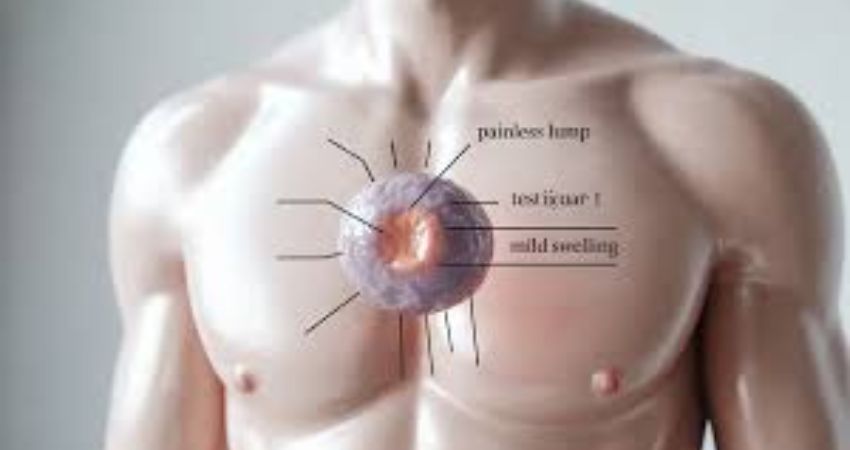Testicular cancer is a relatively rare cancer but is one of the most treatable and curable forms of cancer, especially when detected early. It primarily affects younger men between the ages of 15 and 35, though it can occur at any age. Despite its high cure rate, a diagnosis of testicular cancer can be overwhelming for patients and families alike. Understanding the treatment journey—from diagnosis through recovery—can help alleviate fears and prepare you for what lies ahead. This blog explores the full spectrum of testicular cancer treatment, helping you navigate every step with clarity and confidence.
What is Testicular Cancer?
Testicular cancer occurs when abnormal cells grow uncontrollably in one or both testicles. The testicles are part of the male reproductive system, responsible for producing sperm and testosterone. Tumors in the testicles can be benign (non-cancerous) or malignant (cancerous), with malignant tumors requiring prompt treatment.
Common Signs and Symptoms
- A lump or swelling in either testicle
- Heaviness or discomfort in the scrotum
- Sudden fluid accumulation in the scrotum
- Pain or aching in the lower abdomen or groin
- Enlargement or tenderness of the breasts (rarely)
If you notice any of these symptoms, it’s essential to seek medical evaluation quickly.
Diagnosis: Confirming Testicular Cancer
The diagnostic process typically involves:
- Physical Examination: Your doctor will examine your testicles for lumps or abnormalities.
- Ultrasound: This painless imaging test helps distinguish between benign cysts and malignant tumors.
- Blood Tests: Tumor markers such as AFP (alpha-fetoprotein), hCG (human chorionic gonadotropin), and LDH (lactate dehydrogenase) help in diagnosis and monitoring.
- Imaging: CT scans or MRIs of the abdomen and pelvis are used to check if cancer has spread to lymph nodes or other organs.
Once the diagnosis is confirmed, the cancer will be staged—ranging from Stage I (localized cancer) to Stage III (advanced cancer with metastasis).
Treatment Approaches: Tailored to Each Patient
The treatment plan depends on the type of testicular cancer (seminoma vs. non-seminoma), cancer stage, and overall health of the patient. Treatment typically involves a combination of surgery, chemotherapy, radiation, or surveillance.
1. Surgery: The Cornerstone of Treatment
Radical Inguinal Orchiectomy is the primary surgical treatment, involving the removal of the affected testicle through an incision in the groin. This procedure serves two purposes: removing the cancerous tissue and providing tissue samples for further analysis.
For patients with cancer spread to lymph nodes, a retroperitoneal lymph node dissection (RPLND) may be performed to remove affected nodes in the abdomen. RPLND is more complex and usually done after chemotherapy.
2. Chemotherapy: Systemic Cancer Control
Chemotherapy uses powerful drugs to destroy cancer cells throughout the body and is often used for advanced or high-risk disease.
Common chemotherapy regimens for testicular cancer include a combination of bleomycin, etoposide, and cisplatin (BEP). Treatments are given in cycles, with recovery periods in between.
3. Radiation Therapy: Targeted Treatment for Seminomas
Radiation therapy targets cancer cells in specific areas and is primarily used for seminoma type testicular cancers, which are highly sensitive to radiation. It’s typically administered after surgery to reduce the risk of cancer recurrence in lymph nodes.
4. Surveillance: Careful Monitoring for Early-Stage Cancer
For patients with early-stage disease (especially seminomas), doctors may recommend active surveillance after surgery. This approach involves close follow-up with regular imaging and blood tests to catch any recurrence early, potentially avoiding unnecessary chemotherapy or radiation.
Managing Side Effects During Treatment
While testicular cancer treatments are highly effective, they can cause side effects. Common issues include:
- Surgery: Post-operative pain, swelling, or numbness. Most men recover testicular function well, especially if only one testicle is removed.
- Chemotherapy: Nausea, fatigue, hair loss, increased infection risk, and neuropathy (tingling in hands and feet). Long-term side effects may include kidney problems or hearing loss, necessitating regular follow-up.
- Radiation: Fatigue, skin irritation, and digestive issues in the treated area.
Your medical team will provide supportive care and medications to manage these side effects and maintain your quality of life.
Fertility and Emotional Well-being: Important Considerations
Since testicular cancer and its treatment can affect fertility, men are encouraged to discuss sperm banking before treatment begins. Many men maintain fertility after treatment, but it’s essential to address this proactively.
Emotionally, a cancer diagnosis can be distressing. Anxiety, depression, or body image concerns are common. Psychological counseling, peer support groups, and open communication with loved ones can greatly help during this challenging time.
Recovery and Long-Term Follow-Up
Recovery varies depending on the treatment received:
- Surgical recovery generally takes a few weeks, with restrictions on heavy lifting and sexual activity during healing.
- Chemotherapy recovery may take longer, with fatigue lasting weeks to months.
- Radiation side effects often subside within weeks after treatment ends.
Regular follow-up visits are critical to monitor for cancer recurrence and manage any late effects of treatment. These appointments include physical exams, blood tests for tumor markers, and imaging studies.
Conclusion: Hope and Healing
Testicular cancer is one of the most treatable cancers when diagnosed early, with survival rates exceeding 95% in many cases. Advances in surgery, chemotherapy, and radiation have dramatically improved outcomes and quality of life for patients worldwide.
Understanding the entire treatment journey—from diagnosis, through treatment, to recovery—helps patients and families face testicular cancer with knowledge and confidence. If you or someone you love is on this path, remember that expert care, emotional support, and vigilant follow-up are keys to long-term health and well-being.
To read more free articles ( Click Here )
